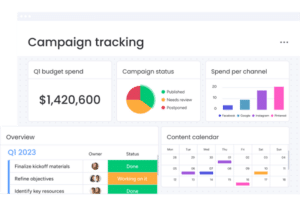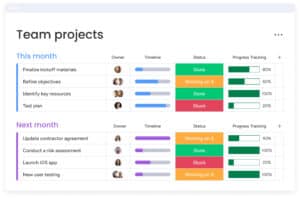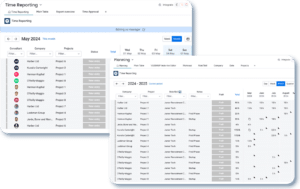Introduction
In the ever-evolving landscape of technology, the debate between open-source and proprietary solutions remains a pivotal point of discussion, especially in the realm of automation. As businesses strive to enhance efficiency and streamline operations, the choice of automation software can significantly impact their journey towards digital transformation. This brings us to an essential comparison: the pros and cons of open-source and proprietary automation software.
At the heart of this discussion lies a fundamental question: Which type of automation software best suits your business needs? Open-source software, with its community-driven development and flexibility, offers a world of customisation and collaboration. On the flip side, proprietary automation software provides a structured environment with professional support and consistent updates. Both pathways offer distinct advantages and challenges, and understanding these can be crucial for businesses looking to harness the power of automation effectively.
In this comprehensive guide, we delve deep into the pros and cons of open-source and proprietary automation software, providing you with detailed insights to help you make an informed decision. Whether you are a small startup or a large enterprise, the type of software you choose can have a lasting impact on your operational efficiency and innovation potential. So, let’s embark on this journey to demystify these two types of automation software and discover which one aligns best with your business objectives.
What is Open-Source Automation Software?
In the realm of digital solutions, open-source automation software emerges as a beacon of innovation and collaboration. But what exactly does it entail? Let’s explore this concept and its unique attributes.
Definition and Key Characteristics
Open-source automation software is defined by its publicly accessible source code. This characteristic allows users and developers around the globe to not only view and modify the code but also to redistribute their versions. The essence of open-source software lies in its community-driven approach, where a diverse pool of contributors, from individual enthusiasts to large corporations, actively shapes its evolution. This collaborative environment fosters continuous improvement and adaptation, ensuring the software stays relevant and robust over time.
Pros of Open-Source Automation Software
The advantages of open-source automation software are manifold, appealing to a wide range of businesses and developers:
- Customisability and Flexibility: With access to the source code, businesses can tailor the software to their specific needs, a boon for those requiring bespoke solutions.
- Community Support and Collaborative Improvements: A vibrant community of users and developers means a wealth of shared knowledge and resources. This aspect not only helps in troubleshooting but also accelerates innovation.
- Cost-Effectiveness: Generally, open-source software can be less expensive than proprietary alternatives. The absence of licensing fees makes it an attractive option for businesses looking to optimize their budgets.
Cons of Open-Source Automation Software
However, the pros and cons of open-source and proprietary automation software must be weighed carefully. Here are some challenges associated with open-source solutions:
- Potential for Security Vulnerabilities: While open-source software is constantly updated, it can be susceptible to security risks, given its public nature. This requires businesses to be vigilant and proactive in implementing security measures.
- Limited Customer Support: Unlike proprietary software, open-source tools may not offer dedicated customer support. This can pose challenges, particularly for businesses without in-house technical expertise.
- Requirement for Technical Expertise: To fully leverage the advantages of open-source software, a certain level of technical skill is required. This might necessitate additional training or hiring of skilled personnel.
Omnitas Newsletter
Sign up for our monthly newsletter to stay up-to-date on our latest blog articles, videos and events!
Thank you!
You have successfully joined our subscriber list.
What is Proprietary Automation Software?
Shifting our focus from the collaborative world of open-source, we venture into the domain of proprietary automation software. This type of software holds its own unique place in the technological ecosystem, marked by exclusive rights and controlled distribution.
Definition and Key Features
Proprietary automation software is characterised by its restricted access and usage rights. Developed and maintained by a single company, this software is not openly available for modification or redistribution. The source code remains under the tight control of its creators, ensuring that any updates, enhancements, and support come exclusively from the original developers. This closed environment provides a structured, often more user-friendly experience, with a focus on reliability and customer support.
Pros of Proprietary Automation Software
Despite the pros and cons of open-source and proprietary automation software, the latter comes with several advantages that make it a preferred choice for many businesses:
- Streamlined User Experience: Proprietary software often offers a more polished and intuitive user interface, catering to users who seek simplicity and ease of use.
- Professional Support and Maintenance: Users of proprietary software benefit from dedicated customer support, which includes troubleshooting, updates, and maintenance, ensuring smoother operations.
- Regular Updates and Security Patches: Since the software is managed by a single entity, updates and security patches are more regular and systematic, offering a higher level of security and functionality.
Cons of Proprietary Automation Software
However, the journey through the world of proprietary software isn’t without its challenges:
- Higher Costs: Proprietary software typically involves licensing fees or subscription costs, which can be a significant investment, especially for smaller businesses.
- Less Customisability: The closed nature of proprietary software limits the level of customisation available to users, which might be a drawback for businesses with specific needs.
- Dependency on a Single Vendor: Relying on a single vendor for updates, support, and enhancements can lead to a phenomenon known as ‘vendor lock-in’, where switching to a different software becomes difficult and costly.
Comparing Open-Source and Proprietary Software in Automation
After exploring the distinct landscapes of open-source and proprietary automation software, it’s crucial to compare these two to understand their respective impacts in practical scenarios. This comparison sheds light on the strengths and weaknesses of each, guiding businesses in making a choice that best suits their unique requirements.
Performance and Reliability
A key aspect in the comparison of the pros and cons of open-source and proprietary automation software lies in their performance and reliability:
- Open-Source Software: Known for its robust performance, especially in systems that benefit from community-driven development. However, the reliability can vary depending on the community’s size and engagement level.
- Proprietary Software: Typically offers high reliability, with dedicated teams ensuring consistent performance. This is often a critical factor for businesses that require guaranteed uptime and support.
Security Considerations
Security is a paramount concern in the digital world, and how each type of software addresses this concern is vital:
- Open-Source Software: Offers transparency in security, where vulnerabilities can be quickly identified and addressed by the community. However, the openness can also pose risks if not properly managed.
- Proprietary Software: Generally provides robust security measures, with dedicated teams responsible for continuous monitoring and updates. The closed nature, however, means users rely entirely on the vendor for these security measures.
Community vs Professional Support
The type of support available can significantly influence the choice between open-source and proprietary software:
- Open-Source Software: Benefits from a diverse community offering peer-to-peer support, rich in innovation and collective problem-solving. This can be a boon for those who prefer collaborative environments.
- Proprietary Software: Comes with professional, often dedicated support, providing a more structured and reliable assistance channel. This is particularly beneficial for businesses that require immediate and professional troubleshooting.

Making the Right Choice for Your Business
Deciding between open-source and proprietary automation software is not just about comparing features; it’s about aligning these features with your business needs and goals. This section will help you assess various factors to make a decision that propels your business forward.
Assessing Your Business Needs
The first step in making an informed decision involves a thorough assessment of your business needs:
- Size and Scale of Operations: Smaller businesses or startups might lean towards open-source software for its cost-effectiveness and flexibility, while larger enterprises may prefer the robustness and support of proprietary solutions.
- Technical Expertise: Consider the technical skillset of your team. Open-source software might require more in-house technical know-how, whereas proprietary software often comes with extensive support and user-friendly interfaces.
- Customisation Requirements: If your business demands highly tailored solutions, open-source software might offer the necessary flexibility. In contrast, proprietary software provides a more out-of-the-box solution.
Long-term Considerations
Looking beyond the immediate needs, long-term strategic planning is crucial:
- Scalability: Evaluate how well the software can grow with your business. Open-source software offers scalability with custom developments, while proprietary software might offer more straightforward scaling options.
- Ongoing Costs: Consider not just the initial costs but also long-term expenses. Open-source might seem less costly initially but can involve hidden costs like custom development and maintenance.
- Future-proofing: Technology evolves rapidly. Ensure that the software you choose can adapt and remain relevant in the long run.
Importance of Integration
In today’s interconnected digital environment, the ability of software to integrate with other tools is essential:
- Compatibility with Existing Systems: Ensure that the chosen software can seamlessly integrate with your existing ecosystem.
- Flexibility for Future Integrations: Consider how well the software can adapt to future technological advancements and integrations.
Conclusion
Navigating the intricate world of automation software requires careful consideration of various factors, as we’ve explored in our examination of the pros and cons of open-source and proprietary automation software. Each type presents a unique set of features, benefits, and challenges, making the choice highly dependent on your business’s specific needs, technical capabilities, and long-term objectives.
Open-source automation software stands out for its customizability, cost-effectiveness, and community-driven innovation. It appeals to those who value flexibility and collaborative development. On the other hand, proprietary automation software offers a streamlined, user-friendly experience backed by professional support and consistent updates, making it a reliable choice for businesses seeking stability and ease of use.
In making your decision, consider not only the immediate needs of your business but also its future trajectory. Factor in aspects like scalability, long-term costs, and the potential for integration with your other tools. Remember, the right software should not only solve your current challenges but also propel your business towards future growth and success.
As we conclude this comprehensive guide on the pros and cons of open-source and proprietary automation software, we hope it has provided you with valuable insights to guide your decision-making process. In the dynamic landscape of business technology, making an informed choice in your automation tools can be the catalyst for enhanced efficiency, innovation, and sustained competitive advantage.
If you found this blog post useful, make sure to sign up for our monthly newsletter below. Stay in the loop regarding all things business efficiency!
























